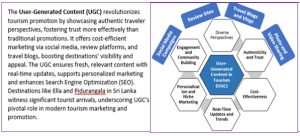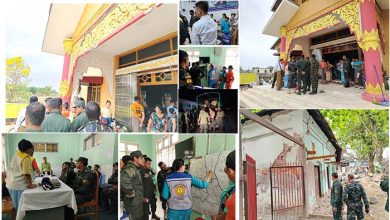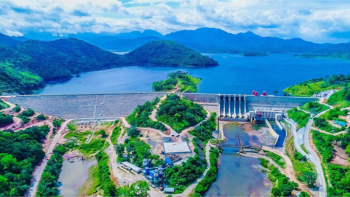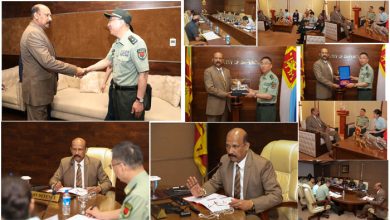Transforming Sri Lanka Tourism through Inclusive and Sustainable Value Chains
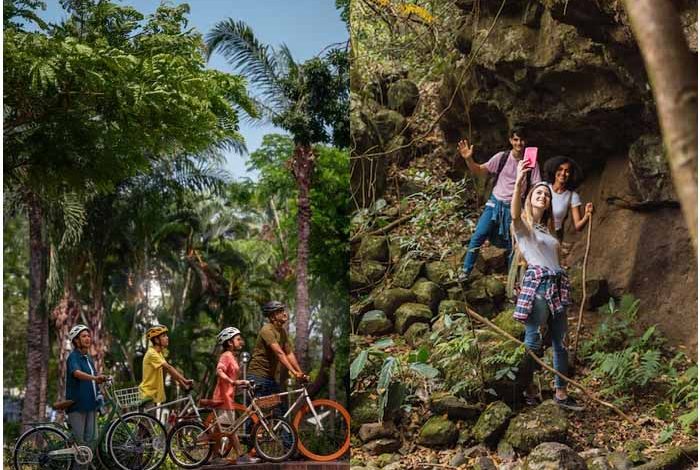
By

Prof. DAC Suranga Silva
Professor in Tourism Economics
Coordinator: Sustainable Tourism Unit (UOC-STU), University of Colombo
Emails: drsuranga@econ.cmb.ac.lk; drsuranga3@gmail.com
Current Global Economy: “Surprisingly Resilient”
Despite the World Economy is “Surprisingly Resilient”, it is still facing some challenges. Mainly, it has been due to the remaining impact of the COVID-19 pandemic, geopolitical instability and cyclical economic forces. Anyway, the projected growth will be at 3.1% in 2024 and 3.2% in 2025 (IMF-2024).
Recovery of Global Tourism: “Impressively Coming Back Better”
- Global tourism has almost completely recovered from the unprecedented crisis of COVID-19 with many destinations. Most of these countries are reaching or even exceeding pre-pandemic arrivals and receipts (UNWTO, 2024). Global tourist arrivals during the third quarter of 2023 has made 22% increase compared to the same period last year.
- According to the World Travel & Tourism Council (WTTC) forecasting, year 2024 will be a historic year for the
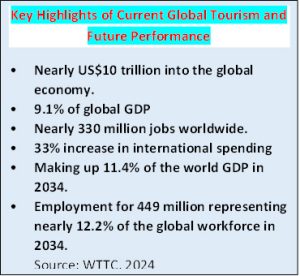 Travel & Tourism sector in global economy. Its economic contribution to global economy is projected to reach an unprecedented $11.1 trillion, surpassing the previous records by $770 billion, by accounting for One in Every Ten Dollars It is also expected to have the highest records of tourist arrivals in 142 out of 185 countries in the world in 2024.
Travel & Tourism sector in global economy. Its economic contribution to global economy is projected to reach an unprecedented $11.1 trillion, surpassing the previous records by $770 billion, by accounting for One in Every Ten Dollars It is also expected to have the highest records of tourist arrivals in 142 out of 185 countries in the world in 2024. - Furthermore, many destinations in global tourism will be able to reach or even exceeding pre-pandemic tourist arrivals and receipts (https://www.unwto.org/news).
Recovery of Sri Lanka Tourism: “Remarkably Coming Back”,
- Sri Lanka Tourism is currently experiencing “Remarkably Coming Back”, with a significant growth of tourist arrivals and tourism revenue. Recent SLTDA statistics show surging tourist arrivals from key markets like India, Russia, the UK, Germany, and China. Europe and Asia-Pacific play crucial roles, with Europe contributing 58.6% of total arrivals and Asia-Pacific 34.6% (SLTDA, 2024).
- Recreational tourism and related activities are still one of the key primary sources of tourist arrivals while the ongoing trends and patterns of Visiting Friends & Relatives (especially from Australia, Canada, and the UK), MICE, Bleisure, Wellness, Cultural Heritage, Agriculture, Homestay, Rural, Wildlife, Spiritual, Slow, Solo, Senior, Digital Nomads and some other types of heterogenous tourism are showing a significant growth potential.
Sustainable Tourism in Circular Economy:
 The UN-Tourism emphasizes an urgent need for all tourism destinations to universally adopt sustainable tourism principles when promoting tourism with any types by ensuring a well-balanced approach through simulternously integrating the environmental, economic, and socio-cultural aspects of tourism development.
The UN-Tourism emphasizes an urgent need for all tourism destinations to universally adopt sustainable tourism principles when promoting tourism with any types by ensuring a well-balanced approach through simulternously integrating the environmental, economic, and socio-cultural aspects of tourism development.
Sustainable Tourism means such “Tourism that takes full account of its current and future economic, social and environmental impacts, addressing the needs of visitors, the industry, the environment and host communities“. https://www.unwto.org/sustainable-development)
Circular Tourism Economy:
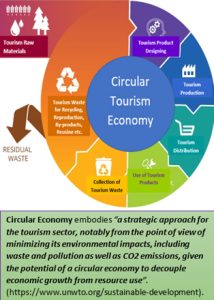 Replacing the Linear Economy, the new paradigm of Circular Economy focuses for a holistic approach aimed at minimizing waste and maximizing resource efficiency, ensuring adopting practices of sharing economies and responsible production system.
Replacing the Linear Economy, the new paradigm of Circular Economy focuses for a holistic approach aimed at minimizing waste and maximizing resource efficiency, ensuring adopting practices of sharing economies and responsible production system.
In contrast, the main focus of a linear tourism economy is to maximize the profit through increasing tourist arrivals and tourism revenue without adequately considering the environmental and socio-economic costs. As a result, certain challenges such as over-tourism, pollution, and degradation of natural and cultural assets are to be addressed.
In addition, such linear tourism has created less value-added contribution and unfairness of tourism income distribution.
Circular Tourism Economy is to promote sustainability of the industry by reducing, reusing, recycling and regenerating tourism related resources.
This Circular Tourism Economy involves rethinking of designing, consumption, and disposal of tourism products & services to minimize environmental harm and maximize socio-economic advantages from the beginning of product development to the end of consumption of tourism products.
Transforming Value Chain for Sustainable Tourism in Sri Lanka
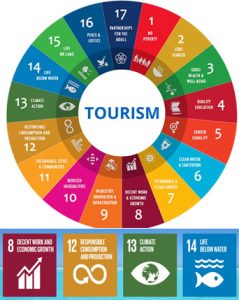 UN Tourism (2023) defines a tourism product, its pricing and distribution as:
UN Tourism (2023) defines a tourism product, its pricing and distribution as:
“A combination of tangible and intangible elements, such as natural, cultural and man-made resources, attractions, facilities, services and activities around a specific center of interest which represents the core of the destination marketing mix and creates an overall visitor experience including emotional aspects for the potential customers. A tourism product is priced and sold through distribution channels and it has a life-cycle” (https://www.unwto.org/tourism-development-products).
Sustainable tourism is to be directly and indirectly aligned in achieving the expected targets of SDGs in Sri Lankan economy.
By applying a holistic framework, the value chain process of Sri Lanka Tourism should ensure of achieving its sustainability through the entire product lifecycle as a destination.
On this this purpose, the Five Major Stages of Value Chain in Sri Lanka Tourism must be thoroughly focused:
(1) Designing,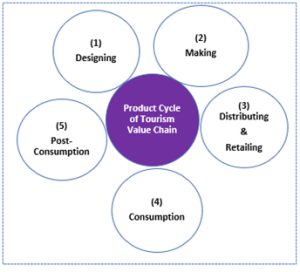
(2) Processing or Making
(3) Distributing & Retailing
(4) Consuming
(5) Post-Consumption
More importantly, this value chain process goes beyond the limits of the Conventional Supply Chain, which mainly focuses on the tangible and logistical facets of tourism manufacturing.
Key Steps in Value Chain for Making Sri Lanka Tourism Sustainable
Policy and decision makers need to follow the three main steps of tourism value chain to ensure sustainable transformation in Sri Lanka Tourism:
Based on the three major steps, the following strategies must be accurately applied to ensure the transformation of Sri Lanka Tourism into an inclusive and sustainable mode.
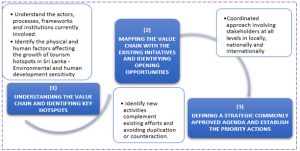
- Create Conducive Platform and Infrastructure Development for Value Chain Optimization
- Integrate Tourism Value Chain with Macro Economy
- Ensure the Best-Fit Synergy and Operational Efficiency
- Prevent Rip-offs by Ensuring the Right Values in the Value Chain to Provide Value for Money
- Assure Sustainable Profitability Framework and Responsible Business Partnerships
- Align Tourism Products for Generating Sustainable and Memorable Tourism Experiences
- Promote Tourism Education, Training and Awareness for Sustainable Tourism Workforce
- Create Targeted Responsible Marketing and Promotion using Growing Social & Other Media Modes such User-Generated Content (UGC) for Sustainable Tourism Promotion
